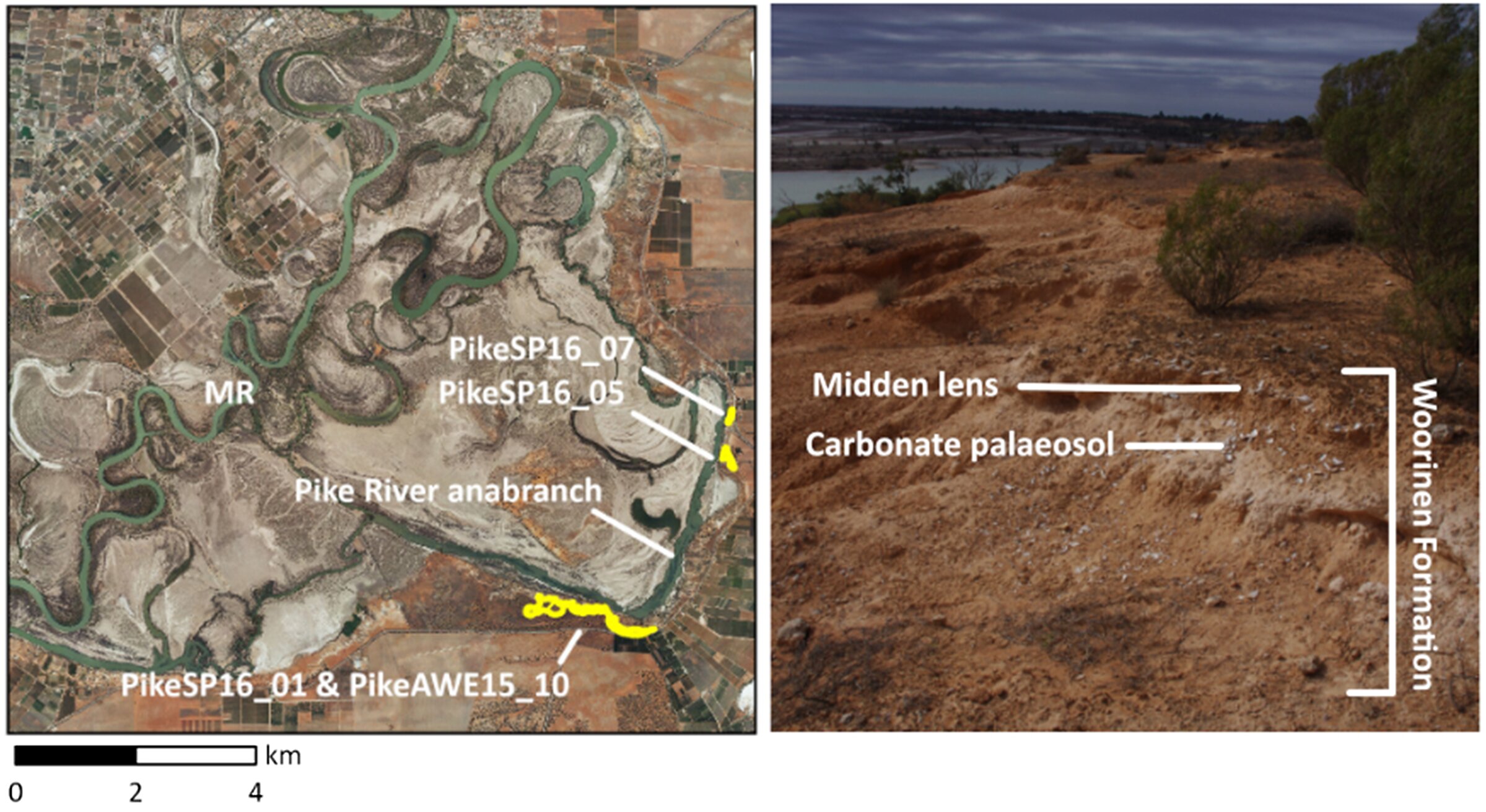New research by Flinders University researchers, conducted in partnership with the River Murray and Mallee Aboriginal Corporation (RMMAC), has documented ancient archaeological sites on the cliff-tops in the region between Morgan and Overland Corner in South Australia.
“The ages of the sites were determined using a radiocarbon dating method and range from over 11,000 years old to recent times,” says Dr. Craig Westell from Flinders University’s College of Humanities, Arts and Social Sciences.
Co-author Professor Amy Roberts says the “research supports previous evidence which has indicated that sites located along the Murray cliffs contain and preserve much of the oldest evidence of Aboriginal peopling along the Murray River corridor in South Australia.”
The oldest known Murray River site was recorded on a cliff line near Renmark during earlier work by Flinders and RMMAC and was nearly 30,000 years old.
“It is always great to see the scientific evidence of our people being here so many years ago. This cements what we as Aboriginal people know; our Culture is one of survival,” says Sheryl Giles, a River Murray and Mallee Aboriginal Corporation community representative.
However, the authors note that many sites are eroding on the edge of the cliffs or are preserved in small sections of roadside reserves or on privately owned land.
“The conservation of these significant and informative cliff-top sites remains precarious and there is an imperative to protect the remaining sites,” says co-author and Flinders Ph.D. candidate Mr. Marc Fairhead.
They argue that informing the public and local land holders about the significance of these places is needed to ensure that this heritage is preserved and so that a greater understanding of Aboriginal life on Australia’s largest river system can be generated.
The paper, “Archaeology on the Edge: Radiocarbon Chronologies for Aboriginal Cliff-top Sites of the Murray River, South Australia,” is published in the journal Radiocarbon.
More information:
Craig Westell et al, Archaeology on the edge: radiocarbon chronologies for Aboriginal cliff-top sites of the Murray River, South Australia, Radiocarbon (2024). DOI: 10.1017/RDC.2024.99
Provided by
Flinders University
Citation:
Cliff-top sites preserve ancient Aboriginal heritage on the River Murray (2024, November 7)
retrieved 7 November 2024
from BTZ
This document is subject to copyright. Apart from any fair dealing for the purpose of private study or research, no
part may be reproduced without the written permission. The content is provided for information purposes only.
